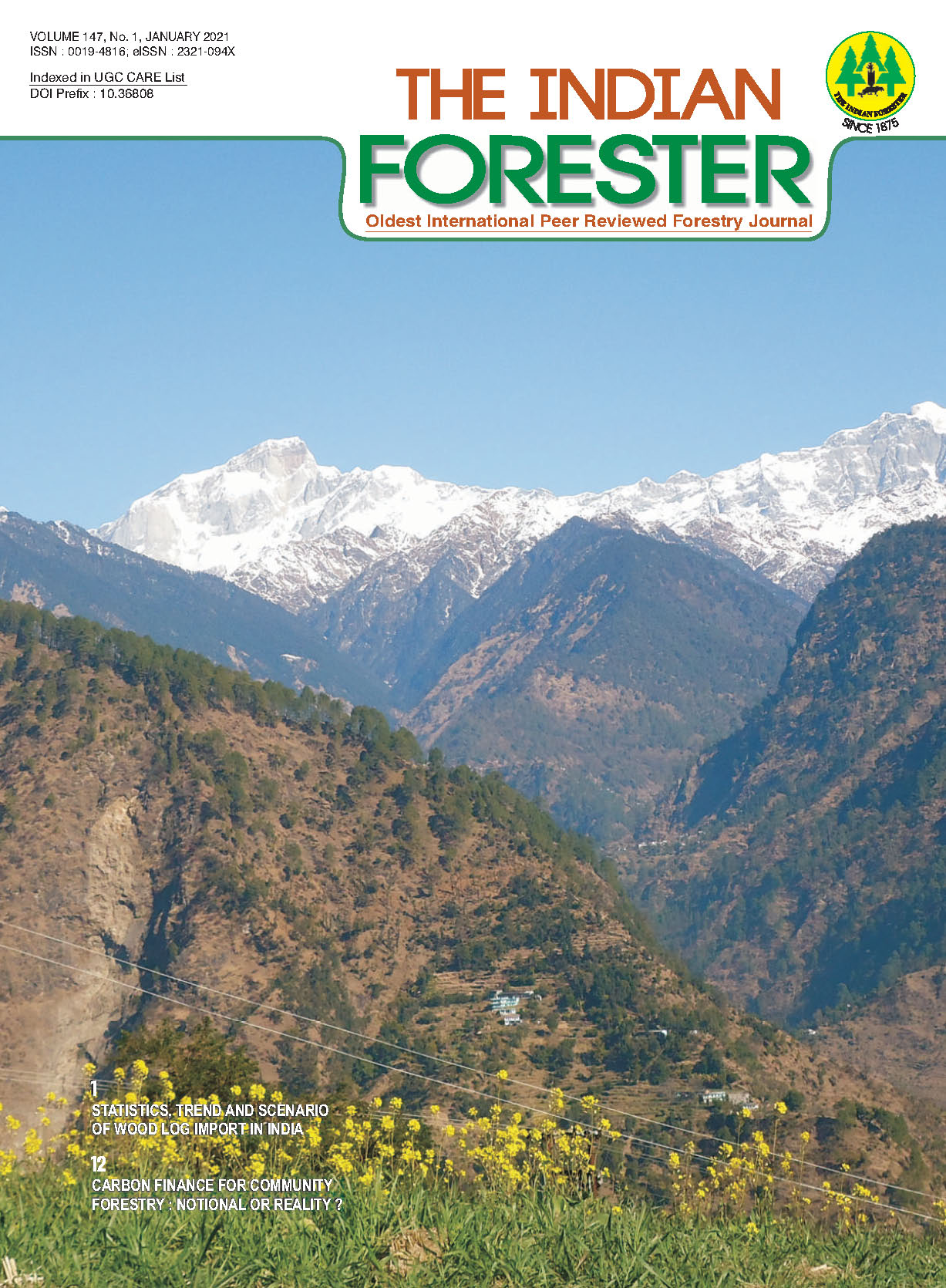A First Report of Albinism in Legume Medicinal Shrub of Cassia auriculata L.
DOI:
https://doi.org/10.36808/if/2021/v147i1/152037Keywords:
cassia, albinism, frequency, mutation, selfing, endosperm,Abstract
No Abstract.
References
Jaisankar I., V. Damodaran, D.R. Singh and R. Sudha (2011). Albinismin Tamarindus indica (L). IndianForester, 137(2):261-263.
Kala S. and S.K. Dubey (2012): Albinism in Putranjiva roxburghii, Indian Forester, 138(6): 571-572.
Kumaran K.I. Jaisankar K. Nesamani and M. Paramathma (2007). Albinism in Pongamia Pinnata (L.) Pierre, Indian Forester, 133(5): 709-710.
Kumaran K., S. Kala and M.G. Rao (2010). Albinism in Bixa orellana (L). Indian Forester, 136 (3): 397-399.
Kumari Maya, Heather J. Clarke, Ian Small and Kadambot H.M. Siddique (2009): Albinism in Plants: A Major Bottleneck in Wide Hybridization, Androgenesis and Doubled Haploid Culture, Critical Reviews in Plant Sciences, 28:6, 393-409.
Mohanty M., Bhola N. and Mohanty S. 2005. Albino seedlings in Pongamiapinnata(L.)Pierre.IndianForester,131(1):127–128.
Nagesh K., Ch. Sudhhakar reddy, S. Chandramouli and P.S. Rao (2001). Albinism in Mundulea sericea (wild) Chevel (Papilionaceae). Indian Forester, 127(4): 480-482.
Rao. P.S., S.S.N. Murti and K. Venkaiah (1999). Albinism in Artrocarpus integrifolia Linn. F. - A case study. Indian Forester, 125(11): 1095-1098.
Rathakrishnan P., P. Rajendran and B.N. Divakara (2003). Albinism in Simarouba gluca Linn. Indian Forester, 129 (9): 1167-1169.
Squillace A.E and J.F. Kraus (1963). The degree of natural selfing in slash pine as estimated from albino frequencies. Silvae Genetica, 30: 163.
Vakashasya R.K (1981). Mutant albino in Red sanders. Silvae Genetica, 36: 50.
Venkatesh C.S and V.K. Sharma (1973). Some unusual seedlings of Eucalyptus: Their genetic significance and value in breeding. Silvae Genetica, 23: 120-124.
Venkatesh. C.S., R.S. Arya and R.C. Thapliyal (1978). An albino – type natural chlorophyll mutant in Gmelina arborea Roxb. Silvae Genetica, 27: 40-41.
Verma S.K (2007). Albino seedlings in Dendrocalamus strictus. Indian Forester, 133(1): 133-134.
Downloads
Downloads
Published
How to Cite
Issue
Section
License
Unless otherwise stated, copyright or similar rights in all materials presented on the site, including graphical images, are owned by Indian Forester.





